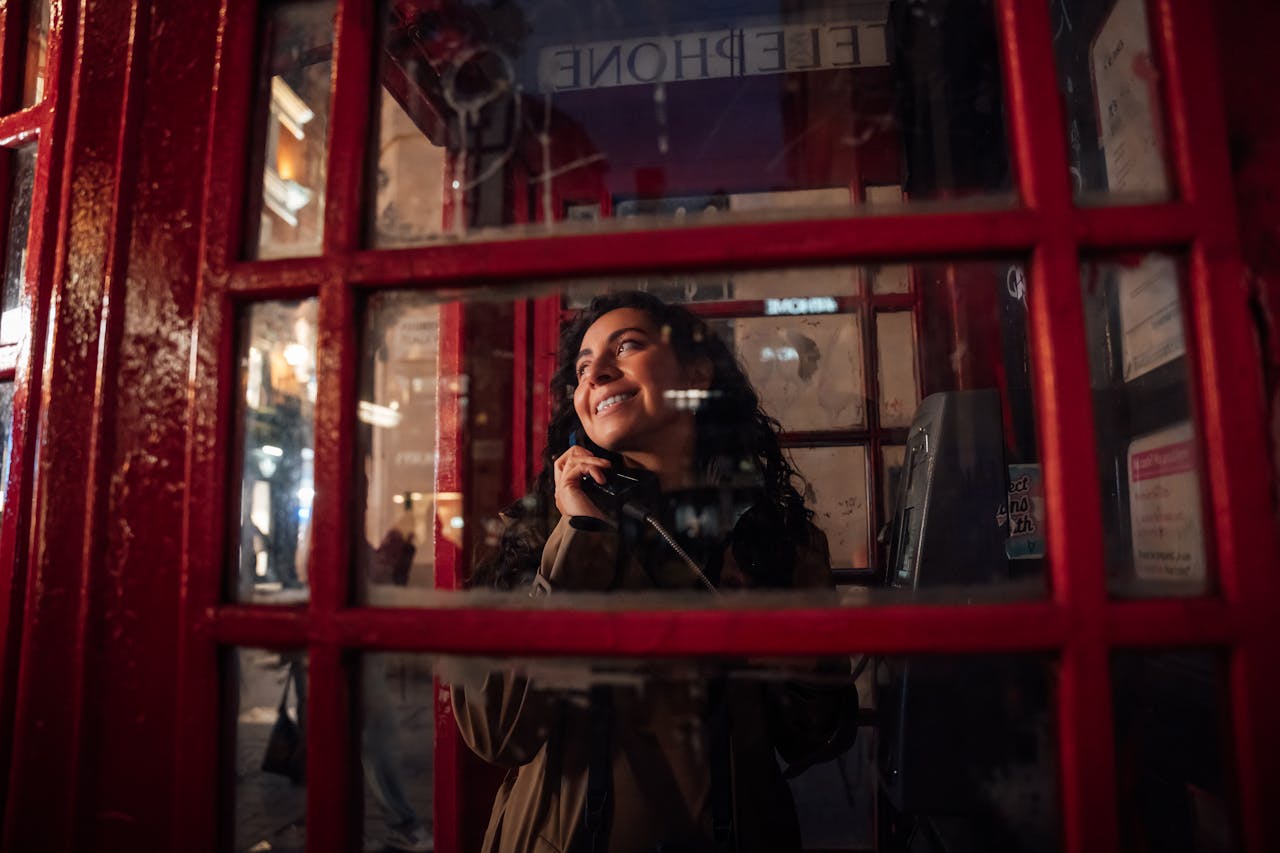When it comes to selling your home, logic plays a role — but psychology often seals the deal. Buyers don’t just look at square footage, roof age, or school districts. They make emotional, instinctive decisions based on how a home feels the moment they step inside.
That’s why home staging is such a powerful tool. It goes beyond cleaning and decorating — it’s about creating an atmosphere that taps into a buyer’s emotions and helps them envision a better version of their life in your space.
But what do buyers really notice? And how can you use staging psychology to your advantage, even on a budget? Let’s break it down.
🧠 Why Psychology Matters in Home Sales
Selling a home isn’t just a financial transaction; it’s a deeply emotional one. For buyers, it’s not only about finding a property — it’s about finding a place where they can imagine their future.
Here’s where psychology comes in:
- First impressions are instant. Studies show people form an impression of a home within the first 7–10 seconds. Staging helps make those first seconds count.
- Emotions drive decisions. Buyers may compare homes logically, but the one they fall in love with is often the one they buy.
- Clarity creates confidence. A staged home tells buyers how each space can be used, eliminating doubt and making it easier to commit.
Understanding these principles allows you to stage your home strategically, making buyers more likely to say, “This is the one.”
👀 What Buyers Really Notice (and How to Stage for It)
1. Curb Appeal and Entryways
The exterior of your home is the very first thing buyers see — and it sets the tone for everything that follows.
What buyers notice:
- Is the yard tidy and inviting?
- Does the front door feel welcoming?
- Is the entryway cluttered or clear?
Staging psychology tip: First impressions trigger emotional responses. A clean yard, fresh mulch, and a bright front door say “This home is cared for.” Inside, a clutter-free entryway signals warmth and organization, easing buyers into the tour.
2. Space and Flow
Buyers aren’t just buying walls — they’re buying square footage and how it feels to live in it.
What buyers notice:
- Does the home feel spacious or cramped?
- Can they move easily from room to room?
- Do rooms have a clear purpose?
Staging psychology tip: Arrange furniture to maximize flow. Remove bulky items that shrink the room. Define each space clearly (a dining room should look like a dining room). Empty spaces leave buyers confused; staged spaces create clarity and confidence.
3. Light and Brightness
Light plays a huge role in mood and perception. Dark spaces feel smaller and less inviting; bright spaces feel bigger and more cheerful.
What buyers notice:
- Are rooms bright and welcoming?
- Do windows allow natural light?
- Are lighting fixtures outdated or modern?
Staging psychology tip: Open blinds and curtains, replace dim bulbs, and use mirrors to reflect light. Adding lamps to darker corners instantly transforms the mood. Bright spaces trigger positive emotional responses and make buyers linger longer.
4. Cleanliness and Condition
Clean homes signal “well-maintained” — and that perception is powerful.
What buyers notice:
- Are kitchens and bathrooms spotless?
- Do surfaces shine, or do they show dirt and wear?
- Are there odors or fresh, neutral scents?
Staging psychology tip: A sparkling home tells buyers, “If the seller took care of the little things, they probably took care of the big things too.” Even older homes feel newer when they’re spotless.
5. Neutrality vs. Personality
Buyers need to imagine their lives in your home, not be distracted by yours.
What buyers notice:
- Are there too many personal photos or unique decor choices?
- Do bold paint colors or unusual furnishings dominate?
- Does the home feel like a “blank canvas” for their imagination?
Staging psychology tip: Neutral colors and simple decor create universality. That doesn’t mean sterile — you can still add warmth with cozy throws, plants, and tasteful accents. The key is balance: enough personality to feel inviting, but not so much that buyers can’t picture themselves there.
6. Lifestyle Cues
Staging is about selling a dream, not just a home. Buyers notice subtle cues that suggest the lifestyle they could have.
What buyers notice:
- Is the dining table set for a dinner party?
- Does the patio suggest relaxing summer evenings?
- Is the office space clean and productive?
Staging psychology tip: Highlight lifestyle moments. A reading nook, a staged outdoor dining area, or a spa-like bathroom setup creates emotional pull. Buyers start to imagine themselves living that life — in your home.
7. Smell and Sound
Our senses influence emotions more than we realize.
What buyers notice:
- Lingering pet odors, smoke, or strong cooking smells
- Overpowering air fresheners or perfumes
- Background noise from traffic or neighbors
Staging psychology tip: Neutralize odors with a deep clean, not just air fresheners. Use subtle scents like vanilla or citrus. Play soft instrumental music during showings. These sensory touches create calm, positive associations.
8. Kitchens and Bathrooms
Buyers are especially tuned into these rooms because they’re expensive to update.
What buyers notice:
- Are counters clear and surfaces shiny?
- Do fixtures look modern and functional?
- Do these spaces feel fresh and move-in ready?
Staging psychology tip: Even small updates — like new cabinet hardware, fresh towels, or updated light fixtures — make a big psychological impact. A clean, modern-feeling kitchen or bathroom reassures buyers about value and reduces objections.
🧩 The Psychology of Buyer Confidence
At its core, home staging is about building confidence. Buyers are more likely to make strong offers when they feel reassured that:
- The home is well cared for
- They won’t face hidden surprises
- The layout and features match their lifestyle
- The property makes them feel good emotionally
Every staging choice — from decluttering to lighting — works together to remove doubt and increase desire.
💡 Budget-Friendly Ways to Stage With Psychology in Mind
You don’t need a professional stager or deep pockets to harness staging psychology. Here are a few affordable ideas:
- Declutter and depersonalize. Free.
- Repaint in neutral tones. Low cost, huge impact.
- Upgrade lighting. Inexpensive fixtures modernize instantly.
- Add plants. Greenery brings life and freshness to any room.
- Accessorize smartly. A bowl of fruit, fresh flowers, or cozy throw pillows create warmth.
- Focus on “wow” rooms. Kitchens, living rooms, and the primary bedroom have the biggest influence.
🏁 Final Thoughts
Home staging isn’t about tricking buyers — it’s about helping them see the full potential of your property. By understanding what buyers really notice and applying some basic psychology, you can transform your home into a place that feels irresistible.
Remember, buyers are looking for more than walls and windows. They’re looking for a place that feels right — where they can imagine their lives unfolding. With thoughtful staging, you can create that emotional connection and, in turn, maximize your home’s appeal, speed up the sale, and potentially increase the final price.
✅ Bottom line: Buyers notice more than just features — they notice feelings. Stage your home to trigger positive emotions, and you’ll give yourself the best chance of turning showings into offers.
Would you like me to also create a “room-by-room staging psychology guide” (e.g., living room, kitchen, bedrooms, bathrooms) as a follow-up piece? That could make a great companion article or even a downloadable checklist for your readers.
You said:
How to Declutter and Depersonalize Before Listing
ChatGPT said:
Here’s a complete 1,000+ word blog-style article on “How to Declutter and Depersonalize Before Listing” — written in a neutral, brand-free tone and ideal for any FSBO or real estate site:
How to Declutter and Depersonalize Before Listing Your Home
When it comes to selling your home, first impressions are everything. Buyers often make a decision about a property within the first few minutes of a showing — sometimes even seconds. And while location, price, and condition all play a role, one factor consistently influences how buyers feel about a home: how well it’s presented.
Two of the most powerful — and affordable — ways to make your home more appealing before you list are decluttering and depersonalizing. These steps not only make your space look cleaner and more spacious, but they also help buyers imagine themselves living there — a critical part of getting strong offers.
If you’re preparing to sell, this guide will walk you through how to declutter and depersonalize like a pro — step by step.
🧹 Why Decluttering and Depersonalizing Matter
It’s easy to underestimate just how much impact clutter and personal touches have on a buyer’s perception. But the truth is, most buyers struggle to see past someone else’s “stuff.” They’re not just evaluating a house — they’re imagining a life.
Here’s why these two steps matter so much:
- Clutter distracts buyers. When a room is filled with too many items, buyers focus on the mess, not the home’s features.
- Personal items make it harder to visualize. Family photos, collections, and personalized decor remind buyers that this is your home, not theirs.
- Less is more. A simplified, neutral space feels bigger, brighter, and more welcoming — and it photographs much better online.
Decluttering and depersonalizing are about more than just cleaning — they’re about creating a blank canvas that buyers can project their future onto.
🗑️ Step 1: Start With a Decluttering Game Plan
Decluttering can feel overwhelming, especially if you’ve lived in your home for many years. The key is to break it into manageable steps.
✅ Tips for Success:
- Start early. Ideally, begin the decluttering process 4–6 weeks before you plan to list.
- Tackle one room at a time. Focusing on a single space keeps the process manageable and prevents burnout.
- Use the “Four-Box Method.” Label boxes for “Keep,” “Donate,” “Sell,” and “Trash.” As you go through each room, place items into the appropriate box.
- Ask yourself tough questions. “Have I used this in the past year?” “Would I buy this again?” “Does it add value to this space?” If the answer is no, it’s probably time to let it go.
💡 Pro Tip: Aim to reduce the visible contents of every room, closet, and shelf by at least 30–50%. Less really is more when you’re selling.
🏡 Step 2: Declutter the Key Spaces Buyers Notice Most
While every room benefits from decluttering, certain areas have an outsized impact on buyers’ perceptions. Focus your efforts here first:
✨ Living Room
- Remove excess furniture to make the room feel larger and more open.
- Clear surfaces — like coffee tables and shelves — leaving only a few carefully chosen decor pieces.
- Eliminate visible wires, stacks of magazines, and unnecessary knick-knacks.
🍳 Kitchen
- Clear countertops of small appliances and clutter. Only leave out one or two attractive items (like a bowl of fruit or a coffee maker).
- Organize cabinets and pantries — buyers often open them. Neat, spacious storage suggests a well-maintained home.
- Empty the fridge and remove anything expired or overly personal (like kids’ art magnets).
🛏️ Bedrooms
- Keep furniture minimal and functional. Beds should be neatly made with neutral bedding.
- Clear nightstands and dressers of personal items.
- Declutter closets — aim for no more than two-thirds full to make them look spacious.
🚿 Bathrooms
- Clear counters of toiletries, makeup, and personal hygiene items.
- Store cleaning supplies and extra toilet paper out of sight.
- Replace old towels with fresh, neutral-colored ones.
🚪 Entryways
- Remove shoes, coats, and bags that make the space feel cramped or chaotic.
- Add a small decorative element (like a mirror or vase) for a welcoming first impression.
🏡 Step 3: Depersonalize to Help Buyers Picture Themselves There
Decluttering clears the space — but depersonalizing transforms it into a neutral, universally appealing environment. The goal is to help buyers emotionally “move in” before they even make an offer.
✅ What to Remove:
- Family photos and portraits. Replace them with neutral art or mirrors.
- Personal collections. Whether it’s sports memorabilia, travel souvenirs, or figurines, pack them away.
- Highly specific decor. Bold colors, niche artwork, or themed rooms can distract buyers or clash with their tastes.
- Nameplates, diplomas, and awards. These remind buyers that they’re walking through someone else’s life, not their future home.
- Religious or political items. These can unintentionally alienate potential buyers. Neutrality is key.
💡 Pro Tip: Imagine your home as a high-end hotel suite — warm and welcoming, but not personal. That’s the feeling buyers should have when they walk in.
📦 Step 4: Simplify, Organize, and Stage What’s Left
Once you’ve removed excess clutter and personal touches, it’s time to organize what remains and create intentional, visually appealing spaces.
🧩 Organization Tips:
- Use baskets or bins to group smaller items in closets and cabinets.
- Create “breathing room” on shelves — don’t pack them full.
- Arrange furniture to highlight space and flow. Avoid blocking windows, walkways, or focal points.
- Add simple, neutral touches like fresh flowers, throw pillows, or a few carefully chosen books.
📸 Remember: Buyers often see your home online first. Clean lines, clear surfaces, and well-organized spaces look better in photos — and better photos mean more showings.
🧼 Step 5: Don’t Forget the “Hidden” Areas Buyers Will Check
Even though closets, basements, attics, and garages aren’t the star of the show, buyers will peek inside. A messy or overstuffed storage area can send the wrong message — that the home lacks space or hasn’t been cared for.
✅ Tips:
- Organize closets with space between hangers.
- Store seasonal or rarely used items off-site (in a storage unit, if necessary).
- Sweep and organize the garage — buyers should be able to visualize parking a car there.
- Clean and declutter utility areas like laundry rooms and basements.
📦 Bonus Tip: Start Pre-Packing for the Move
Decluttering and depersonalizing naturally lead into another important part of selling: getting ready to move. Consider this process your head start.
- Pack away items you don’t use daily.
- Clearly label boxes and store them neatly in a garage or storage unit.
- The less “stuff” in your home during showings, the easier it is for buyers to focus on the property itself.
🏁 Final Thoughts: Create a Space Buyers Can Imagine Themselves In
Decluttering and depersonalizing might feel like a lot of work, but they’re among the most cost-effective strategies you can use before listing. A cleaner, simpler, more neutral home makes it easier for buyers to envision their future — and that vision is what drives offers.
Think of it this way: You’re not just selling a property — you’re selling the idea of a lifestyle. By removing distractions, clearing away personal history, and highlighting the space itself, you’re inviting buyers to imagine their next chapter starting right there.
✅ Final Tip: Before listing photos or showings, do one last “buyer’s walk-through.” Step into your home as if you were seeing it for the first time. If anything catches your eye that feels cluttered, messy, or overly personal — that’s your cue to edit one more time.



